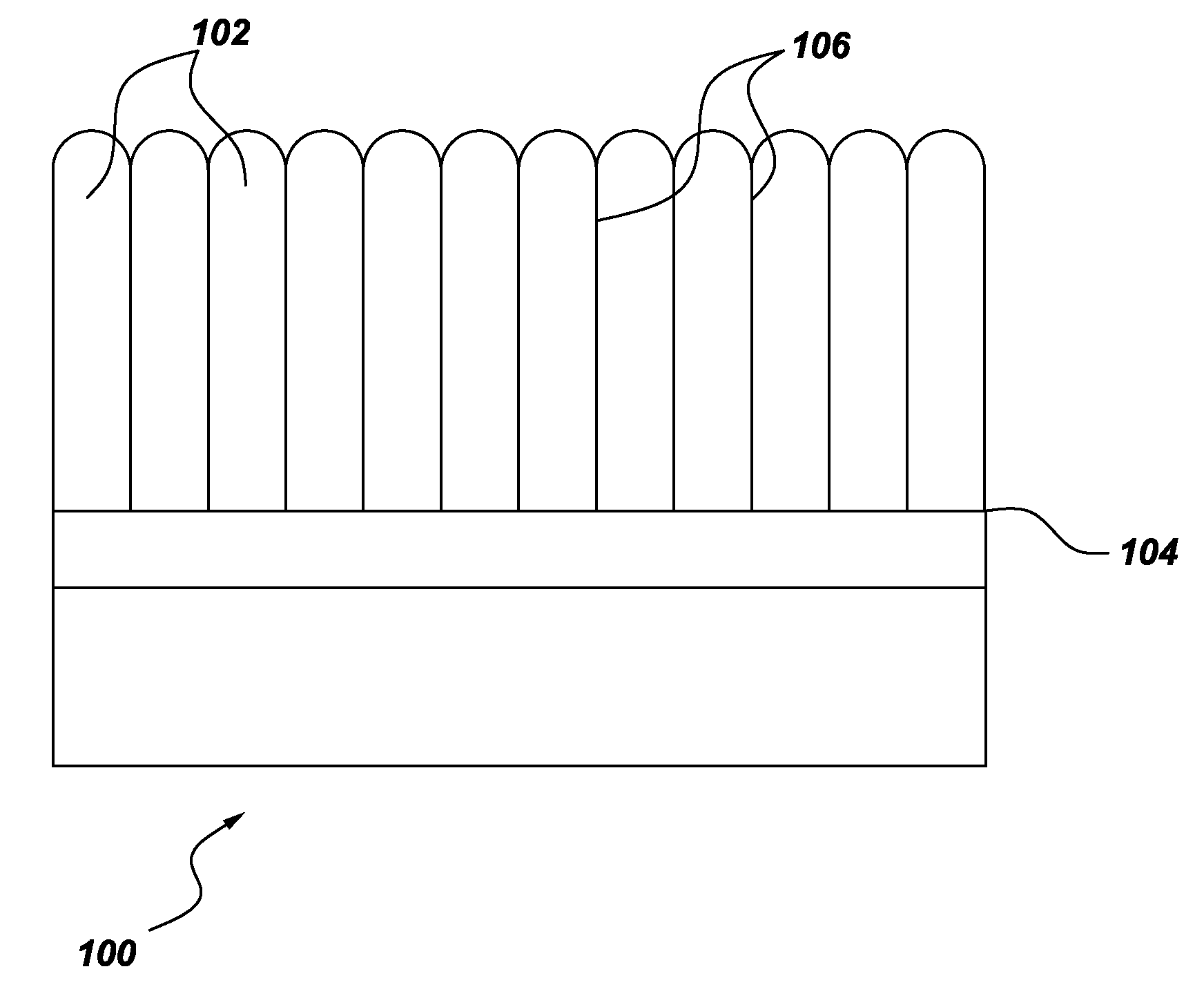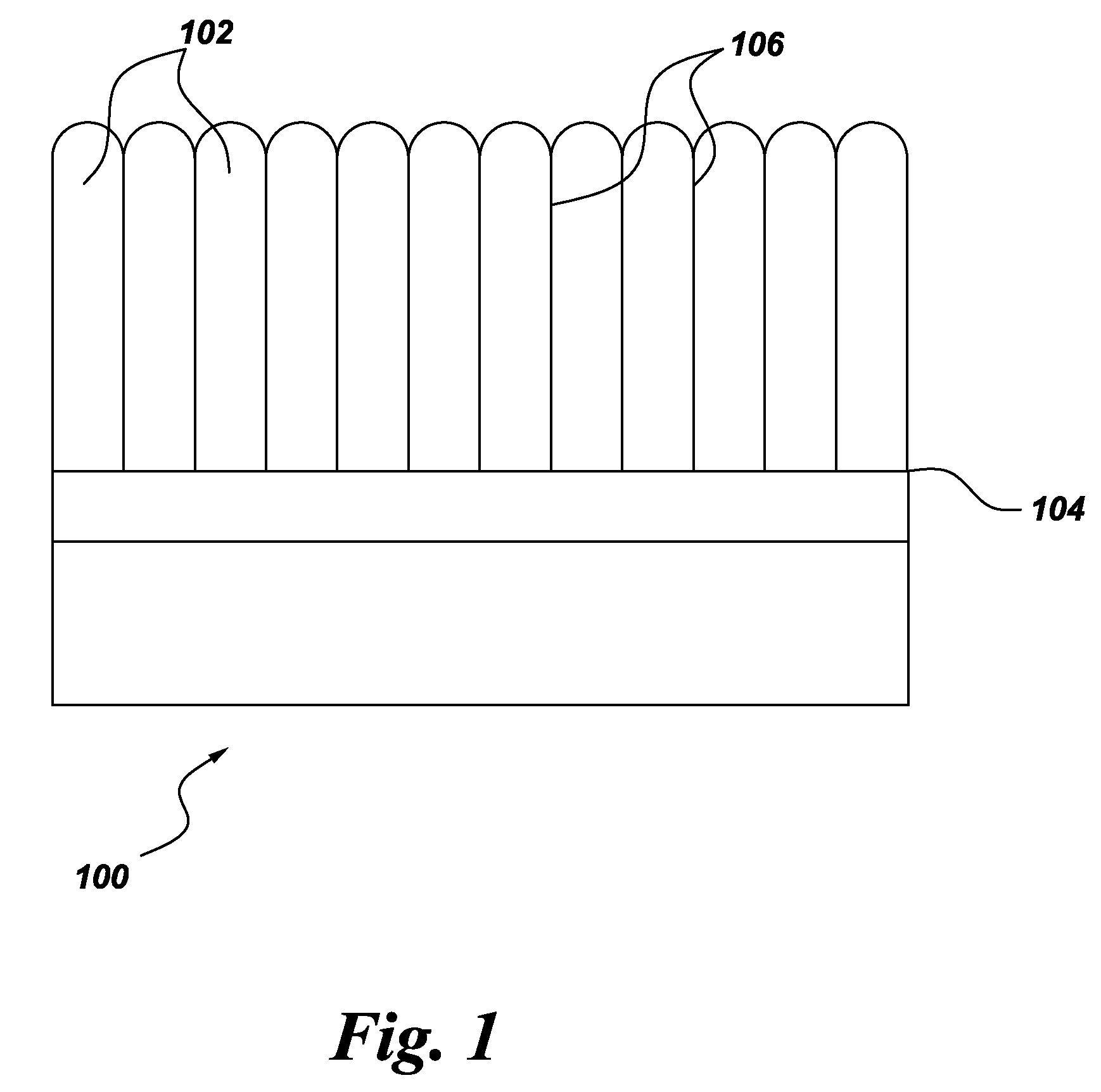Protective coating with high adhesion and articles made therewith
a protective coating and high adhesion technology, applied in the direction of instruments, machines/engines, light beam reproducing, etc., can solve the problems of affecting the adhesion of substrates, and affecting the performance of coatings, etc., and achieves the effect of reducing the strain tolerance and adhesion of substrates
- Summary
- Abstract
- Description
- Claims
- Application Information
AI Technical Summary
Benefits of technology
Problems solved by technology
Method used
Image
Examples
example 1
[0028]An yttria-stabilized-zirconia (YSZ) coating was produced on an Alloy 718 plate using a DC plasma gun. The feedstock material was 8 wt % YSZ powder with a median particle diameter (d50) of 0.4 micrometers suspended in ethanol at 10 percent by weight, using polyethyleneimine as a dispersant (at 0.2 percent by weight of the solids). The suspension was injected at a feed rate of about 0.25 pounds (about 113 grams) of YSZ per hour into a Northwest Mettech Axial III torch through the center tube of a tube-in-tube atomizing injector with a nitrogen atomizing gas flowing through the outer tube. The total torch power was about 120 kW, with a current of about 200 amperes maintained for each of the three torch electrodes, and a total gas flow of 245 liters per minute that consisted of a mixture of 30% argon, 55% nitrogen, and 15% hydrogen. The plasma torch was rastered across the substrate at 600 millimeters (mm) per second while maintaining a constant spray distance of 76 mm distance be...
example 2
[0031]YSZ coatings were produced on substrates of Rene N5 with a platinum nickel aluminide diffusion bondcoat. The bondcoat surface was prepared by grit blasting with 80 grit size aluminum oxide at 40 psi pressure. The average Ra roughness of the substrate surface was about 50 microinches. Coatings were sprayed with the same coating parameters as for Example 1. The coatings were about 228 micrometers thick. The tensile adhesion strength was measured using the ASTM C633 specification. The average adhesion strength was 55.6+ / −11.6 MPa.
example 3
[0032]A YSZ coating was produced on a 304 stainless steel plate grit blasted with 60 grit aluminum oxide at 50 psi pressure. The coating was produced using the same parameters as described in Example 1, except that the torch to substrate spray distance was 50 mm instead of 76 mm (which was used for examples 1 and 2).
[0033]The resultant coating comprised the structure illustrated in FIG. 2, with a matrix comprising a randomly oriented, substantially equiaxed grain morphology; and a plurality of vertically oriented cracks disposed in the matrix. The intracrack density and vertical crack density were measured from cross-sectional images of polished surfaces. The area fraction of solid phases was determined at a magnification of 400× from the contrast in light microscopy to be about 99%. The linear density of vertical cracks that extended at least 50% through the thickness was 560 cracks per inch and the density that extended at least 75% through the thickness was 340 cracks per inch.
[0...
PUM
| Property | Measurement | Unit |
|---|---|---|
| width | aaaaa | aaaaa |
| aspect ratio | aaaaa | aaaaa |
| width | aaaaa | aaaaa |
Abstract
Description
Claims
Application Information
 Login to View More
Login to View More - R&D
- Intellectual Property
- Life Sciences
- Materials
- Tech Scout
- Unparalleled Data Quality
- Higher Quality Content
- 60% Fewer Hallucinations
Browse by: Latest US Patents, China's latest patents, Technical Efficacy Thesaurus, Application Domain, Technology Topic, Popular Technical Reports.
© 2025 PatSnap. All rights reserved.Legal|Privacy policy|Modern Slavery Act Transparency Statement|Sitemap|About US| Contact US: help@patsnap.com



